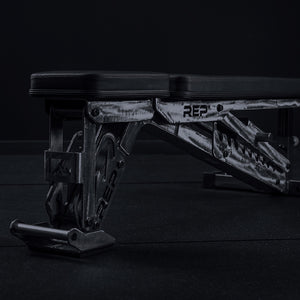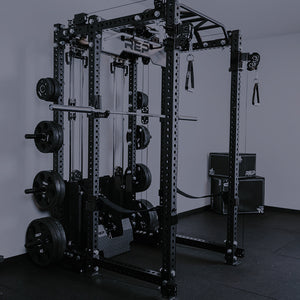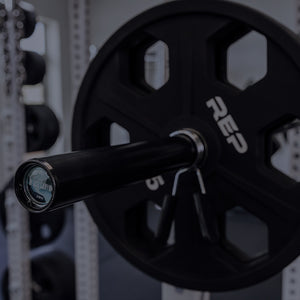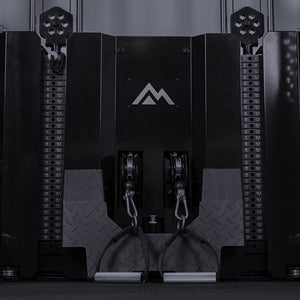
Whether you're into Olympic weightlifting, powerlifting, or functional fitness, protecting your thumbs during heavy lifting is essential. Thumb taping is a simple yet effective way to prevent blisters, calluses, and skin tears, allowing you to lift with confidence and reduce discomfort.
But what exactly is lifting tape, and how do you use it effectively? Let’s dive into the details.
What Does Thumb Taping Do?

Thumb tape is a specialized lifting tape designed to protect your thumbs during intense lifting sessions. It’s particularly useful for athletes who use the hook grip—a grip style where the thumb is wrapped around the barbell and then covered by the fingers, providing a more secure hold on the bar.
This grip is common in Olympic weightlifting and powerlifting.
Taping your thumbs can help reduce friction and pressure, preventing blisters, calluses, and cuts that can result from heavy lifting. Anyone who frequently lifts heavy weights or participates in high-intensity workouts can benefit from thumb taping.
How to Wrap a Thumb with Lifting Tape
Properly taping your thumbs can make a world of difference in your lifting experience. Here’s a step-by-step guide on how to strap a thumb with tape:
Make sure your hands and thumbs are dry and free from sweat or oil.

Choose a length that comfortably wraps around your thumb several times.
Wrap the base: 
Start at the base of your thumb and wrap the tape around it, making sure to keep it snug but not too tight.

Continue wrapping the tape up the thumb, covering the joint and securing the tip. The goal is to create a protective layer that still allows for flexibility and movement.
Secure the end:

Tear or cut the tape and press it down firmly to ensure it stays in place.
For the best thumb tape for lifting, check out REP Thumb Tape. REP Thumb Tape was designed by lifters, for lifters. Ideal for Olympic weightlifters, functional fitness athletes, powerlifters, and Strongman competitors, this tape provides reliable, high-quality protection from blisters and calluses, allowing you to push your limits without unnecessary discomfort.

Can You Wear Thumb Tape in Sanctioned Competitions?
Always check with your association’s rulebook, as regulations can vary by competition and year to year. Generally, thumb tape is permitted in Olympic weightlifting, functional fitness, and powerlifting meets, provided it follows specific guidelines.
For example, in USAPL (powerlifting), the tape must be wrapped circumferentially around the thumb and must adhere to specific overlap rules. In USAW and IWF (weightlifting) competitions, the tip of the thumb must remain exposed. For the CrossFit Games, tape that enhances safety and comfort without providing an athletic advantage is allowed, though unapproved logos are prohibited.
Different Ways to Use Lifting Tape
While thumb tape is most commonly used for protecting the thumbs during lifting, it can also be applied in other ways:
- Protecting Palms: Wrapping tape around your palms can help prevent blisters and calluses during high-rep workouts or exercises that involve a lot of grip work, like kettlebell swings or pull-ups.
- Shielding Forearms: If you find your forearms getting irritated from barbell or dumbbell movements, you can wrap a layer of tape around them to reduce friction and add a bit of padding.
- Reinforcing the Hook Grip: If you’re new to the hook grip and still adjusting, adding a layer of tape can help make the grip more comfortable and secure.
How to Hook Grip on a Barbell (and Why)

Hook grip is a powerful technique used by weightlifters to improve grip strength and control, especially during heavy lifts like snatches and deadlifts. To execute a proper hook grip:
- Grip the Bar: Place your thumb around the barbell first, then wrap your index and middle fingers over your thumb.
- Tighten the Grip: Squeeze your fingers tightly around the thumb and bar, ensuring a secure hold.
- Practice: Hook grip can be uncomfortable at first, but with practice, it becomes a reliable method for lifting heavy weights.
The reason lifters use the hook grip is that it locks the bar in place more securely than a traditional overhand grip, reducing the chance of the bar slipping during lifts. It’s especially beneficial in Olympic lifts, where a solid grip is crucial for safety and performance.
Learn more about how to improve you grip – as well as other strong grip options other than hook grip – in this blog.
Why Choose REP Thumb Tape?

REP Thumb Tape stands out for its durability, comfort, and performance. Made from stretchy materials that offer superior protection without compromising movement, this lifting tape is ideal for intense lifting sessions.
Highlights include:
- Mild adhesive: The light adhesive sticks where needed without leaving residue, and the excellent stretch holds it securely in place.
- Superior protection: The 5cm width offers excellent thumb coverage without hindering movement.
- Great stretch: The tape can stretch up to 170%, ensuring a perfect fit.
- High-performance material: Made from 95% cotton and 5% spandex, the tape is slightly textured, breathable, and hypoallergenic.
- Convenient packaging: Available in a three-pack, with each roll individually wrapped for freshness.
Bottom Line
Using thumb tape and mastering hook grip are great skills for anyone serious about lifting heavy weight.
Whether you’re looking to protect your hands, improve your grip, or simply enhance your lifting experience, proper taping techniques can make all the difference.
So grab some lifting tape, follow these steps, and lift with confidence, knowing your hands are well-protected for every rep.

NEWSLETTER SIGNUP
Product launch information, promotions, blogs, and REP news.







